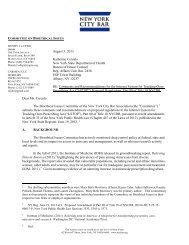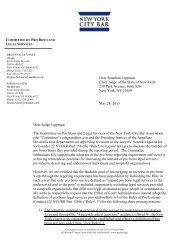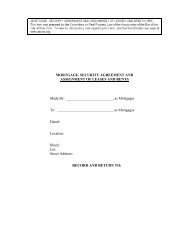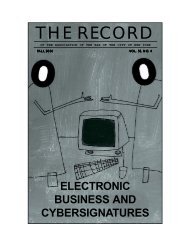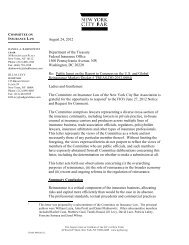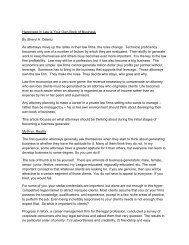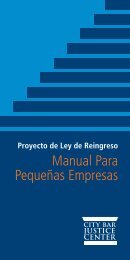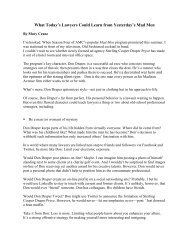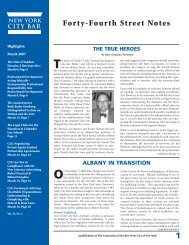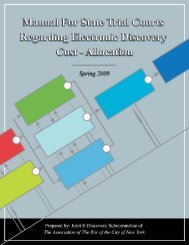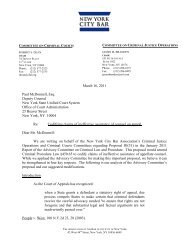2007 Issue 1 - New York City Bar Association
2007 Issue 1 - New York City Bar Association
2007 Issue 1 - New York City Bar Association
Create successful ePaper yourself
Turn your PDF publications into a flip-book with our unique Google optimized e-Paper software.
P A U L R. M C D A N I E L<br />
Conclusion<br />
The assertion that an exemption system is less complex than a model<br />
WWI/FTC system simply will not stand up to analysis. Indeed, it does not<br />
even hold true as compared to the current U.S. rules. As noted above, in<br />
several important areas, the model WWI/FTC system actually achieves greater<br />
simplification than does an exemption system. Moreover, the Panel approach<br />
involving the use of an exemption system for business income<br />
and a WWI/FTC system for other income necessarily is inherently more<br />
complex than either current law or the model WWI/FTC system proposed<br />
here, as taxpayers have to comply with two different systems of taxing<br />
foreign income.<br />
IV.<br />
The next issue to be addressed is whether efficiency gains would be<br />
realized by changing from the present system to a territorial system or,<br />
alternatively, by changing from the present system to a model WWI/FTC<br />
system. There may be a number of different ways in which the term efficiency<br />
is used. For definitional purposes in this paper, the term shall refer<br />
to a tax system that affects as little as possible the nature and location of<br />
business and investment activities.<br />
There are a number of problems with the current U.S. international<br />
tax rules that violate this efficiency criterion. In no particular order, these<br />
include, but are not limited to, (1) use of the check-the-box rules for foreign<br />
subsidiaries; 39 (2) the ability of a parent company to borrow in the<br />
U.S. to fund foreign subsidiaries the tax on whose income is deferred but<br />
the interest on the loan is fully deductible against U.S. taxable income;<br />
(3) the deferral regime itself; (4) the ability to treat as foreign source 50%<br />
of export sales income even though that income is unlikely to be taxed in<br />
the importing country; (5) to this observer, at least, insufficient resources<br />
devoted to curbing aggressive transfer pricing structures; and (6) the ability<br />
to average down foreign taxes by cross-crediting low and high tax<br />
country taxes. The result has been very low effective rates of U.S. tax on<br />
the foreign income of U.S. companies.<br />
39. For a discussion of the impact of these rules in the international context, see Lawrence<br />
Lokken, Whatever Happened to Subpart F U.S. CFC Legislation After the Check-the-Box<br />
Regulations, 7 Fla. Tax Rev. 186 (2005). See also ABA Task Force, note 4, at 668. See also<br />
Lokken, note 3, at 759-764; Paul W. Oosterhuis, The Evolution of U.S. International Tax<br />
Policy—What Would Larry Say 42 Tax Notes Int’l 1119, 1124 (2006), for a proposal similar<br />
to that advanced in the text.<br />
2 0 0 7 V O L. 6 2 , N O. 1<br />
83



